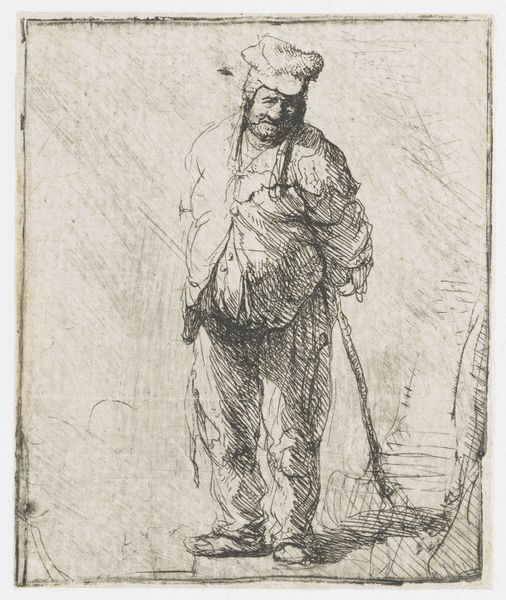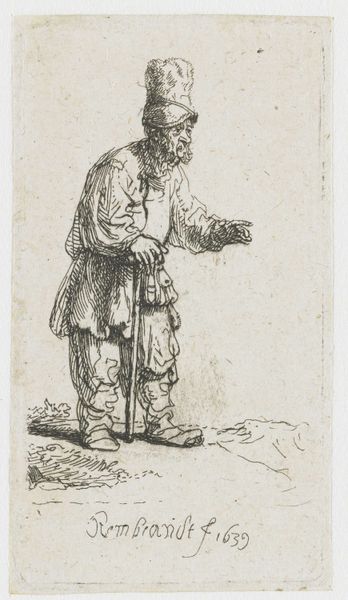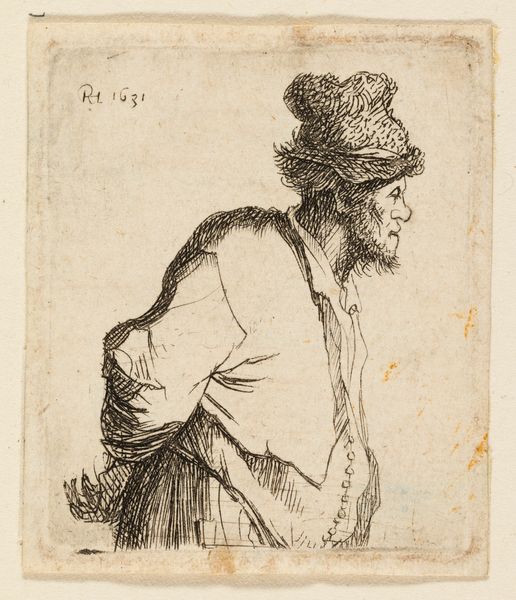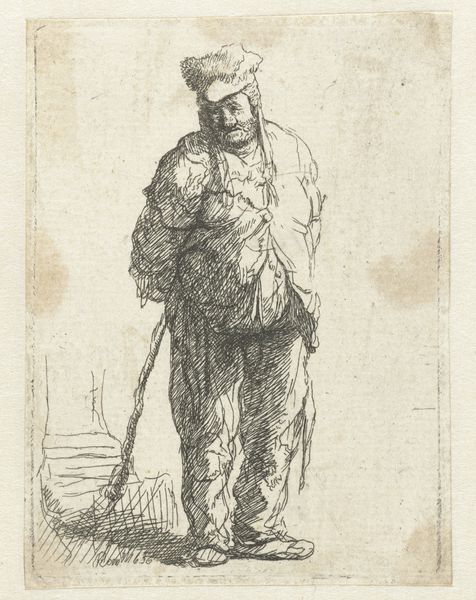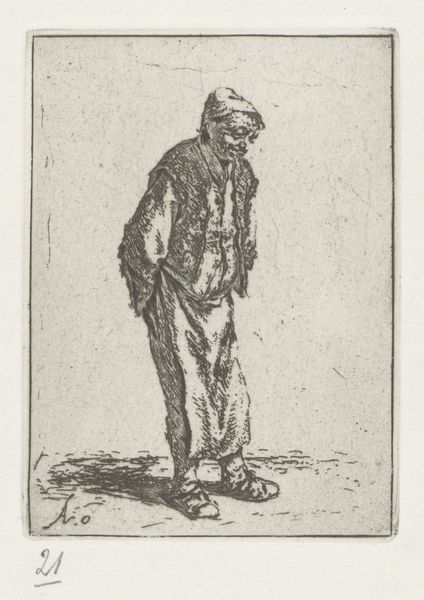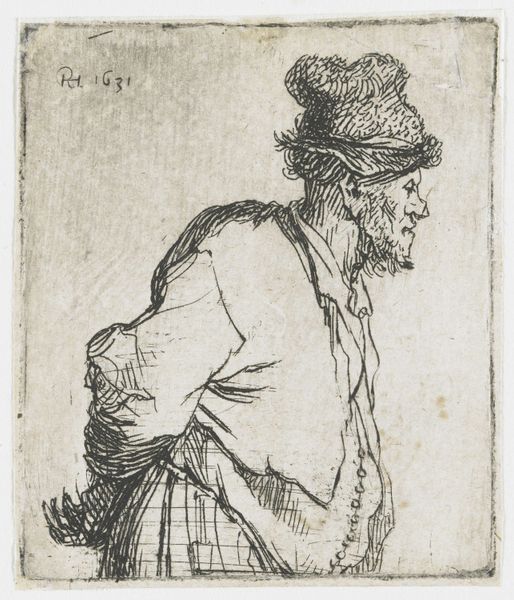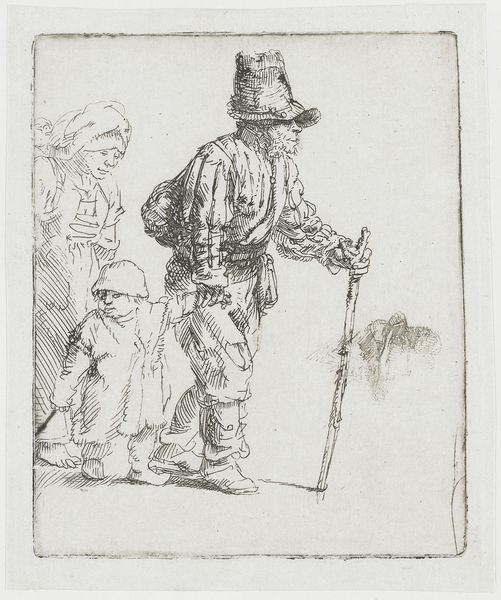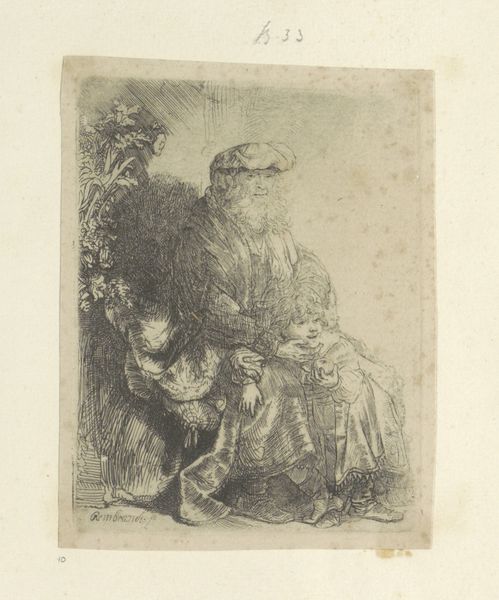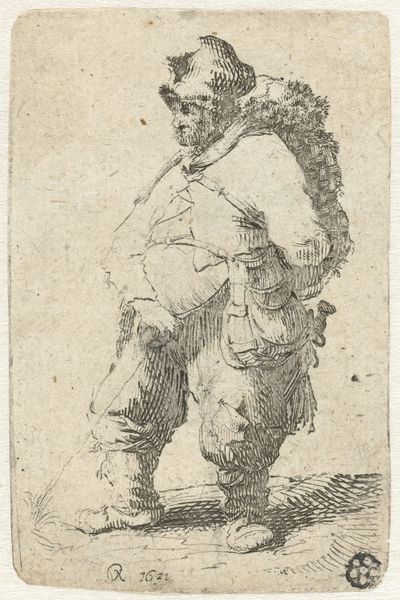
print, etching
#
portrait
#
baroque
# print
#
etching
#
etching
#
figuration
#
genre-painting
Dimensions: height 52 mm, width 48 mm
Copyright: Rijks Museum: Open Domain
Rembrandt van Rijn created this etching of a hurdy-gurdy player in the 17th century, a period marked by significant social stratification in the Dutch Republic. The image depicts a street musician, a common sight in Rembrandt’s time, yet often marginalized in society. The hurdy-gurdy itself, a mechanical stringed instrument, was associated with itinerant musicians and the lower classes. Rembrandt, while achieving fame as a portraitist for the wealthy, frequently turned his eye to the everyday lives of ordinary people. What does it mean to portray such a figure? Does Rembrandt seek to ennoble the common man, or simply document the diversity of Dutch society? This etching invites us to consider the stories of those often overlooked in the grand narratives of history, and to reflect on the value we place on different forms of labor and artistic expression.
Comments
rijksmuseum about 2 years ago
⋮
Initially, Rembrandt was fascinated above all by pathetic wretches compelled to beg for alms. Later, he also developed an interest in other colourful city folk, which he usually depicted in the same minuscule format. In these six etchings, he portrayed a quack in outmoded clothing, two Polish soldiers, two street musicians (an organ grinder and a fiddler) and a skater.
Join the conversation
Join millions of artists and users on Artera today and experience the ultimate creative platform.
